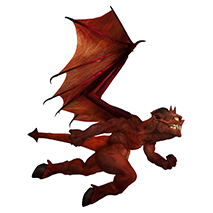A Jungian approach to characters for Writers
How do you get inside a character and understand what makes them tick? How can you use their desires, history and motivation to create memorable personalities? One possible technique is to draw on archetypal characters found in mythology that many writers use when creating characters.
These archetypes can be found in a wide range of fiction including Greek mythology, Charles Dickens’ novels, Star Wars and Star Trek. Many films use archetypical characters to drive their story. Some game shows and reality TV shows profile potential contestants and select those who fit into specific archetypes.
Amongst the archetypes are characters as diverse as heroes, rulers and sages. Each archetype has a set of core desires that they aspire to. They also have a shadow form or dark side (a term borrowed by George Lucas from this theory). This is their villainous form that they may become if they take the archetype to its worst extremes.
As with many theories about the structure and elements of good stories it is only a guide to producing better characters. It can, however, be a useful way of considering, shaping and developing characters.
So Tell Me About Your Dreams
The psychologist Jung first suggested the theory of archetypal characters in the early part of the twentieth century. By studying myths and legends from across the world he identified a set of cross-cultural archetypal characters that appeared even though the stories themselves were quite different. He suggested that this was because all people have a set of common psychic drives, a sort of deep-seated software in our brains. As a result of this we are able to identify with the characters from stories from cultures radically different to our own.
Joseph Campbell, famous for the hero’s journey plot structure that the Star Wars films are based on, and many others, have taken Jung’s work and developed it further. From these a variety of different suggested sets of archetypes exist, some with more and some with less archetypes. Their use of Jung’s work is widely taught on writing courses and repeated in books on writing. This technique, although related, isn’t the same. Campbell’s hero’s journey focuses on a series of plot points through which a hero passes during a story and is good for plot-focused stories of a particular kind. Some writers will tell you that every successful film ever made fits this structure. Sometimes, however, their efforts to prove this may seem rather forced.
This technique focuses on a method for developing strong well-defined characters. By understanding the archetypes you can set up conflicts between characters and within characters. You can see opportunities to add characters who will move your story in different directions. It uses a set of twelve that aren’t divided into different gender specific versions. It also has the advantage that the good and bad versions aren’t separated into distinct archetypes, making it easier to see the variations possible within an archetype.
This is the first in a series of blog posts. Part 2 should appear here next Wednesday covering Drivers and Shadows. It is based on an article I originally wrote for Valkyrie Quarterly.
Next Part: Characters on the Couch (Part 2).

Leave a Comment